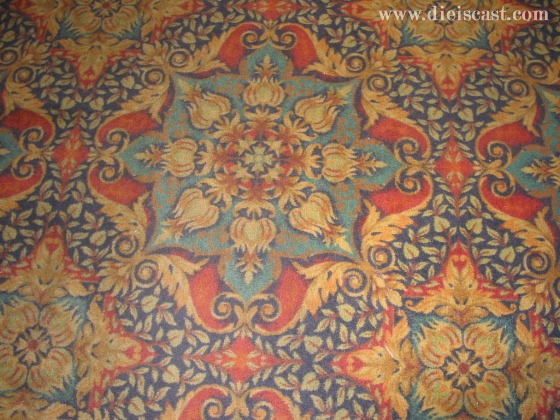[Image©James Estrin for the NYT]
I noticed first that the dead characters were all facing different
direction in the space. They weren't lined up in rows, but were at
angles with one another. I noticed too that when the stars were
mentioned — and here Wilder sounds like Spinoza, whom he loved, and
Thomas Carlyle, whom he does not mention — the characters all looked
up as one at the sky. All of them are sitting there looking for
something. The play states this, and the director has gotten all of
the dead characters to stare in front of them, slightly up, with faces
of intense, determined concentration. They are not resigned nor are
they really at peace. They are looking forward. They never deviate
from this, except when they look up, as one.
Then Emily takes her famous fantasy journey back to the morning of her
16th birthday. (Here I begin to cry even as I write this.) And then
the surprise happened. I wasn't ready for it, I wasn't looking for it,
I wasn't expecting it. I didn't even realize it was happening — until
I smelled something. Bacon and eggs! A curtain in the back of the
theater opened, revealing the morning of Emily's birthday, but this
time… the characters were in period dress, the kitchen was decorated
and fitted exactly as a kitchen would have been in 1910, and the snow
was falling outside the kitchen window and the sun was rising, with its
beautiful rays penetrating and lighting up the scene. This time, no
exaggerated gestures, no 'inwardness' at all — just a family breakfast
on a beautiful winter's morning, with real bacon and eggs being cooked,
and Mrs. Webb looking as if she had stepped out of an old family
photograph. What is going on here is the physical beauty and
historical specifics of a day in the life, a concrete day in the life
— and the characters are completely lost in it. No inwardness, no
'feeling', no reflectedness; and yet all the unnoticed loveliness of a
Spring morning in Chevy Chase, or on Macomb Street with Brutus the dog
and an overnight seventh-grade blood brother.
Thus when Emily gave her famous speech — 'Goodbye, Grovers Corners' — she
did not turn to the audience, nor even to the poignant, vivid, colorful
scene before her (hitherto, all the actors had been in grays and browns
and blacks, all muted and blending into each other.) Rather, Emily
turned inward and bowed her head and turned away from the audience, and
grieved for what she never saw. And then the Stage Manager bade us
good night, and the lights went out. Fade to black.
What I take this all to be about is exactly what Charles Isherwood said
in his review for the Times — “… a feat of stagecraft that transmits
the essence of Wilder's philosophy with an overwhelming sensory
immediacy.” It's not just the bacon and eggs — it is the alienation
of human existence. We neither see what's happening on the surface nor
do we see what's happening below the surface. The characters in the
breakfast scene at the end of the play are completely unaware of the
beauty and actual lyricism which exists all around them. The
characters in Act Two are aware of the emotions underlying everything,
but not of any “God's-eye” cutaway that is required for the meaning of
those events to be understood. The characters in Act Three are
looking forward — there is a little teleology here and I was reminded
of John Steinbeck's 'loss of teleology' in his mid-career — but to
what? They are certainly not looking backward. The dead have, to use
Kerouac's phrase, 'retired from Samsara'. They don't 'like it' —
Wilder's line — when the living come to call on them on their windy
hill. They are definitely not looking backward. And they are so far
from the particularities of the winter light of a 16th birthday, and
the 'odorama' of the memory, that Emily can barely express her loss, so
absorbing and consuming it is.
Back to the main body of Paul Zahl's report on David Cromer's production of Our Town (scroll down for the conclusion).

